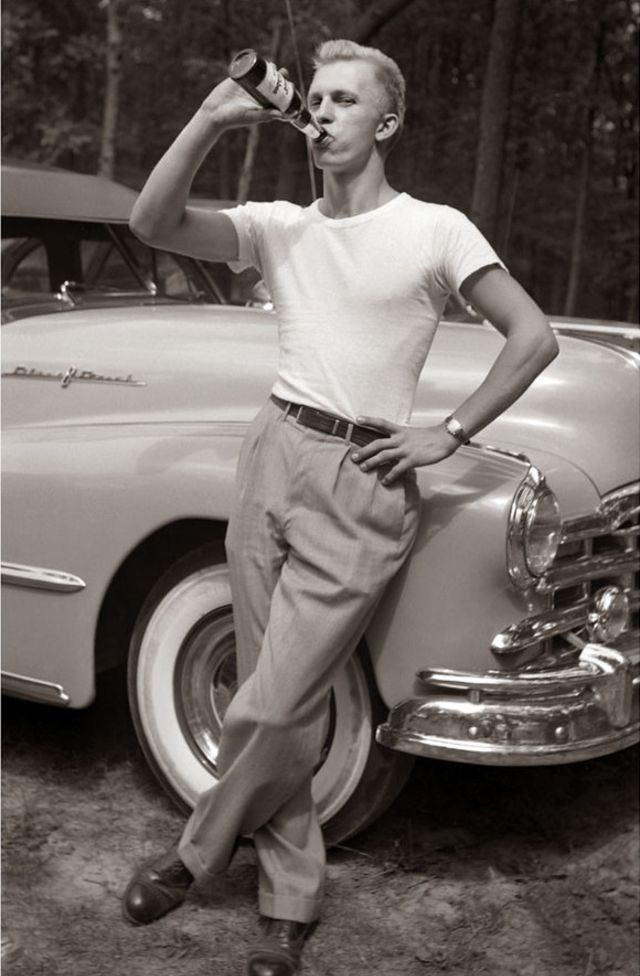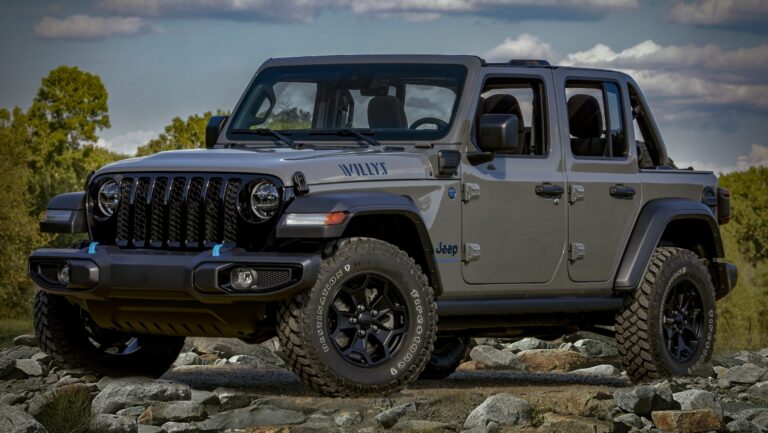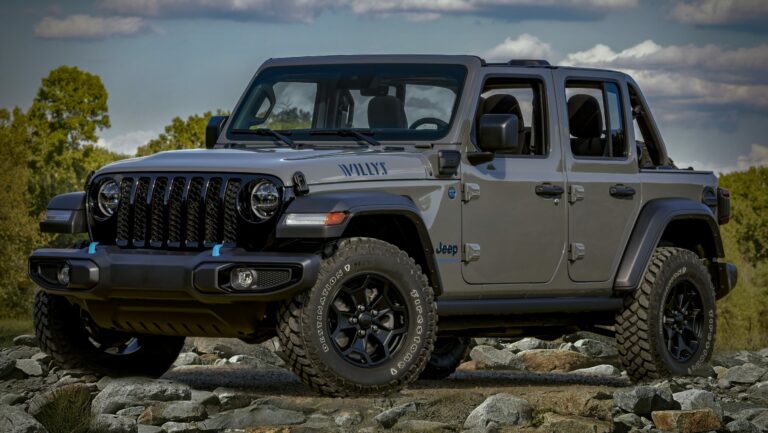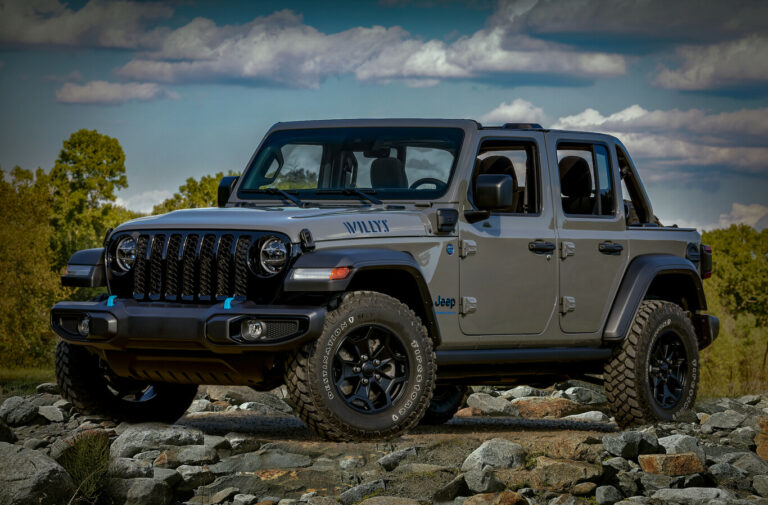1950 Willys Jeep For Sale: Your Comprehensive Guide to Owning an Icon
1950 Willys Jeep For Sale: Your Comprehensive Guide to Owning an Icon jeeps.truckstrend.com
Introduction: The Enduring Allure of the 1950 Willys Jeep
The year 1950 stands as a fascinating crossroads in automotive history, particularly for the iconic Willys Jeep. Having transitioned from its legendary military service in World War II, the Willys-Overland company was firmly establishing its civilian presence with the CJ (Civilian Jeep) series. A 1950 Willys Jeep isn’t just a vehicle; it’s a tangible piece of Americana, a testament to rugged simplicity, and a symbol of post-war innovation. For enthusiasts, collectors, and adventurers alike, the prospect of a "1950 Willys Jeep For Sale" ignites a unique blend of nostalgia, practical utility, and the thrill of owning a true classic.
1950 Willys Jeep For Sale: Your Comprehensive Guide to Owning an Icon
This article serves as a comprehensive guide for anyone considering purchasing a 1950 Willys Jeep. We will delve into its historical significance, outline critical inspection points, provide practical buying advice, and discuss the realities—both challenging and rewarding—of owning such a distinguished piece of automotive heritage. Whether you’re seeking a project, a weekend cruiser, or a show-quality restoration, understanding the nuances of the 1950 Willys Jeep market is paramount to making an informed and satisfying acquisition.
Historical Context and Enduring Appeal
The story of the Willys Jeep begins in the crucible of World War II, where the "Go-Devil" powered MB model proved its unparalleled versatility and durability on battlefields worldwide. Post-war, Willys-Overland quickly recognized the civilian potential of their robust design. The CJ-2A was the first civilian model, introduced in 1945, followed by the slightly refined CJ-3A in 1949. The 1950 Willys Jeep falls squarely into the CJ-3A lineage, often referred to as the "Universal Jeep."
The CJ-3A retained the fundamental ruggedness and four-wheel-drive capability of its military predecessors but incorporated features better suited for agricultural, industrial, and recreational use. Key distinctions of the CJ-3A included a one-piece windshield that could still fold down, an externally mounted fuel filler, and a more comfortable seating arrangement. It continued to be powered by the reliable L-head "Go-Devil" 4-cylinder engine, paired with a T-90 three-speed manual transmission and the legendary Dana 18 transfer case, offering both high and low range 4WD.
The enduring appeal of the 1950 Willys Jeep lies in several factors:
- Simplicity and Mechanical Purity: These Jeeps are mechanically straightforward, making them accessible for owner-maintenance and repairs. There are no complex electronics, just robust, time-tested components.
- Unmatched Off-Road Capability: Even by modern standards, a well-maintained Willys Jeep with its lightweight, short wheelbase, and excellent approach/departure angles is incredibly capable off-road.
- Nostalgia and Iconic Status: It represents a bygone era of practical, no-nonsense utility vehicles and holds a special place in automotive history. Owning one is a conversation starter.
- Community and Parts Support: A vibrant community of Willys Jeep owners and a healthy aftermarket parts industry ensure that keeping these vehicles on the road is a feasible and enjoyable endeavor.

What to Look For When Buying a 1950 Willys Jeep
Before diving into the market, it’s crucial to understand the different conditions you might encounter and what to prioritize during inspection. Willys Jeeps come in a wide spectrum, from rusty relics to pristine restorations.

Condition Categories:
- Project/Barn Find: These are typically non-running, incomplete, or heavily rusted vehicles requiring a full frame-off restoration. They offer the lowest entry price but demand significant time, skill, and financial investment.
- Driver Quality: These Jeeps are running, roadworthy (though often needing some TLC), and generally complete. They might have cosmetic flaws, minor mechanical issues, or older repairs. This category often represents the best value for someone looking to use the Jeep immediately and improve it over time.
- Restored/Show Quality: These vehicles have undergone professional or meticulous amateur restorations, often to concours standards. They are in excellent mechanical and cosmetic condition, usually commanding the highest prices.

Key Inspection Points (Practical Advice):
Regardless of the category, a thorough inspection is critical. Bring a flashlight, a magnet (to detect body filler), and ideally, a knowledgeable friend.
- 1. Frame: This is arguably the most critical component. The Willys Jeep’s ladder frame is robust, but it is highly susceptible to rust, especially where dirt and moisture accumulate.
- Check: The main rails (especially near spring hangers and body mounts), crossmembers, and the area around the steering box. Look for severe pitting, cracks, or evidence of amateur welding repairs. A compromised frame is a major red flag and costly to fix properly.
- 2. Body: The Willys body tubs are known for rusting in specific areas.
- Check: Floorboards (front and rear), "hat channels" (the structural supports underneath the floor), lower cowl, fender wells, and the tailgate. Use a magnet to check for thick layers of body filler hiding rust. Many reproduction body tubs are available, but a solid original tub is preferred.
- 3. Engine & Drivetrain: The "Go-Devil" L-head 4-cylinder engine (L-134) is legendary for its durability.
- Engine: Look for oil leaks, listen for unusual noises (knocking, ticking), and check for excessive smoke from the exhaust (blue for oil, white for coolant, black for rich fuel). Check the oil for signs of coolant (milky). Verify it starts easily and idles smoothly.
- Transmission (T-90) & Transfer Case (Dana 18): Check for proper shifting, grinding noises, and leaks. Engage 4WD high and low ranges to ensure the transfer case works correctly.
- Axles (Dana 25 front, Dana 44 rear): Check for leaks around the differential covers and axle seals. Listen for excessive noise during a test drive, which could indicate worn gears or bearings.
- 4. Electrical System: Original Willys Jeeps used a 6-volt system. Many have been converted to 12-volt for easier starting and modern accessory compatibility.
- Check: All lights, gauges, wipers, and horn. If it’s a 6-volt system, ensure it charges properly. If converted to 12-volt, verify the conversion was done professionally and all components (alternator, starter, gauges, lights) are compatible.
- 5. Suspension & Steering:
- Suspension: Inspect leaf springs for sagging or broken leaves. Check shackles, U-bolts, and shock absorbers.
- Steering: Look for excessive play in the steering wheel, which could indicate worn components like the steering box, tie rod ends, or drag link.
- 6. Brakes: Willys Jeeps have drum brakes all around.
- Check: Brake pedal feel (should be firm, not spongy), fluid leaks at the master cylinder or wheel cylinders, and general stopping power during a test drive. Be aware that drum brakes require more effort and have longer stopping distances than modern disc brakes.
- 7. Originality vs. Modifications: Decide what your preference is. Some buyers want a bone-stock, historically accurate vehicle. Others prefer tasteful upgrades like a 12V conversion, power steering, disc brakes, or even engine swaps for modern driveability. Understand what you’re getting.
- 8. Documentation: A clear title is essential. Any service records, owner’s manuals, or history of the vehicle add significant value and peace of mind.
The Buying Process: Tips and Considerations
Once you’ve identified a potential 1950 Willys Jeep for sale, navigating the buying process requires patience and due diligence.
Setting a Budget:
Remember that the purchase price is just the beginning. Factor in:
- Restoration Costs: If buying a project, budget for parts, labor (if you’re not doing it yourself), paint, and possibly specialized tools.
- Insurance and Registration: Classic vehicle insurance can be surprisingly affordable, but check local regulations.
- Storage: Secure, dry storage is crucial for preserving your investment.
- Unexpected Repairs: Even well-maintained classics can have unforeseen issues.
Where to Find Them:
- Online Marketplaces: eBay Motors, Craigslist, Facebook Marketplace are common, but require careful vetting.
- Specialty Forums & Websites: Websites dedicated to Willys Jeeps (e.g., The CJ-3A Page, G503 forums) often have classified sections with knowledgeable sellers and buyers.
- Classic Car Dealers: Some dealers specialize in vintage 4x4s. Prices may be higher, but vehicles are often pre-inspected.
- Auctions: Live and online classic car auctions can be a good source, but set a firm budget and stick to it.
- Word-of-Mouth: Networking with local classic car clubs or Jeep enthusiasts can uncover hidden gems.
Due Diligence:
- Ask for Detailed Photos/Videos: Don’t rely on a few blurry images. Request specific shots of problem areas (frame, rust spots, engine bay). Ask for a video of it starting and running.
- VIN Check: Verify the VIN (Vehicle Identification Number) on the title matches the vehicle’s frame. While pre-1981 VINs are shorter and less standardized, ensure consistency.
- Pre-Purchase Inspection (PPI): If possible, hire a qualified mechanic or a Willys Jeep specialist to inspect the vehicle on your behalf, especially if you’re buying long-distance. This small investment can save you thousands later.
- Test Drive: If the vehicle is running, take it for a test drive. Pay attention to how it shifts, brakes, steers, and sounds. Drive it at various speeds.
- Negotiation: Based on your inspection findings and market research, be prepared to negotiate the price. Minor flaws can be leverage.
Transportation:
Consider how you will transport the Jeep if it’s not roadworthy or if you’re buying it from a distance. Enclosed transport is recommended for restored vehicles.
Owning a 1950 Willys Jeep: Challenges and Rewards
Bringing a 1950 Willys Jeep home is just the beginning of the adventure. Ownership comes with its unique set of challenges and incredibly fulfilling rewards.
Challenges:
- Performance Expectations: These Jeeps are slow by modern standards. Top speeds rarely exceed 50-55 mph, and comfortable cruising is often lower. They are not highway cruisers.
- Safety: Lacking modern safety features like airbags, ABS, and even robust seatbelts, driving requires heightened awareness and defensive driving. Drum brakes require longer stopping distances.
- Maintenance: While simple, they require regular attention. Grease fittings, fluid checks, and general preventative maintenance are crucial. Parts are generally available, but some specific body or trim pieces can be scarce and expensive.
- Refinement: Expect a noisy, bumpy, and unrefined ride. This is part of their charm but can be tiring on long trips.
- Rust Prevention: The battle against rust is ongoing. Proper storage (indoors, dry) and regular cleaning are essential.
Rewards:
- Unique Driving Experience: There’s nothing quite like driving a vintage Willys. The open-air feel, the manual steering, and the connection to the road create an immersive and engaging experience.
- Community: The Willys Jeep community is passionate and supportive. You’ll find a wealth of knowledge, shared experiences, and camaraderie at events, online forums, and local clubs.
- Historical Significance: Owning a 1950 Willys is owning a piece of history. It’s a conversation starter and a vehicle that sparks joy and curiosity wherever it goes.
- Investment Potential: Well-maintained or professionally restored Willys Jeeps can appreciate in value, especially as fewer original examples remain.
- Versatility: From off-road adventures and farm work to parades and casual weekend cruises, the Willys Jeep remains incredibly versatile.
- Satisfaction of Self-Reliance: Its mechanical simplicity empowers owners to perform many repairs and maintenance tasks themselves, fostering a deep sense of accomplishment.
1950 Willys Jeep Price Guide
The price of a 1950 Willys Jeep can vary significantly based on its condition, originality, and location. This table provides a general estimate:
| Condition Category | Price Range (USD) | Description |
|---|---|---|
| Project/Parts | $3,000 – $8,000 | Non-running, incomplete, significant rust, or major mechanical issues. Requires full restoration. |
| Driver Quality | $9,000 – $20,000 | Running, roadworthy, and generally complete. May have cosmetic flaws, minor mechanical issues, or older repairs. Suitable for immediate use with ongoing improvements. |
| Restored/Show | $25,000 – $50,000+ | Excellent mechanical and cosmetic condition, often having undergone a professional, frame-off restoration. May be original or tastefully modified. |
Note: These are estimated ranges and can fluctuate based on market demand, specific vehicle history, location, and the seller’s urgency.
Frequently Asked Questions (FAQ) about the 1950 Willys Jeep
Q1: Is a 1950 Willys Jeep suitable for daily driving?
A1: Generally, no. While robust, they lack the comfort, speed, and safety features of modern vehicles. They are best suited for recreational use, weekend cruising, or as a hobby vehicle.
Q2: What kind of fuel economy can I expect?
A2: Fuel economy is not a strong suit. Expect around 15-20 miles per gallon (MPG), depending on driving conditions and vehicle tune.
Q3: Are parts difficult to find for a 1950 Willys Jeep?
A3: For most mechanical components (engine, transmission, axles, brakes), parts availability is surprisingly good due to a strong aftermarket and enthusiast community. Some specific body panels or unique trim pieces might be harder to source but are often reproduced.
Q4: Can I upgrade a 1950 Willys Jeep for better performance or comfort?
A4: Absolutely. Common upgrades include converting to a 12-volt electrical system (for easier starting and modern accessories), adding power steering, converting to disc brakes, and even engine swaps (though this impacts originality and value for some collectors). Suspension upgrades are also popular.
Q5: What’s the main difference between a CJ-2A and a CJ-3A (which a 1950 Willys would be)?
A5: The most significant visual difference is the windshield. The CJ-2A (1945-1949) typically had a two-piece, split windshield, while the CJ-3A (1949-1953) featured a single-piece windshield. The CJ-3A also had minor improvements in seating and interior space.
Q6: What is the top speed of a 1950 Willys Jeep?
A6: A stock 1950 Willys Jeep, with its L-134 "Go-Devil" engine, typically has a top speed of around 50-55 mph. However, cruising comfortably at that speed for extended periods is not recommended due to noise, vibrations, and lack of modern safety features.
Conclusion
The pursuit of a "1950 Willys Jeep For Sale" is more than just a search for a vehicle; it’s an embarkation on a journey into automotive history and a lifestyle of rugged adventure. These iconic machines represent a bygone era of simplicity, utility, and unyielding capability. While owning one comes with its share of considerations—from diligent inspection for rust and mechanical issues to understanding its limitations in modern traffic—the rewards far outweigh the challenges for the right enthusiast.
By carefully assessing condition, setting a realistic budget, and performing thorough due diligence, prospective buyers can confidently acquire a piece of living history. Owning a 1950 Willys Jeep offers a unique driving experience, a strong community, and the profound satisfaction of preserving a true American legend. Embrace the journey, and you’ll find that the spirit of the original "Go-Devil" lives on, ready for new adventures.




